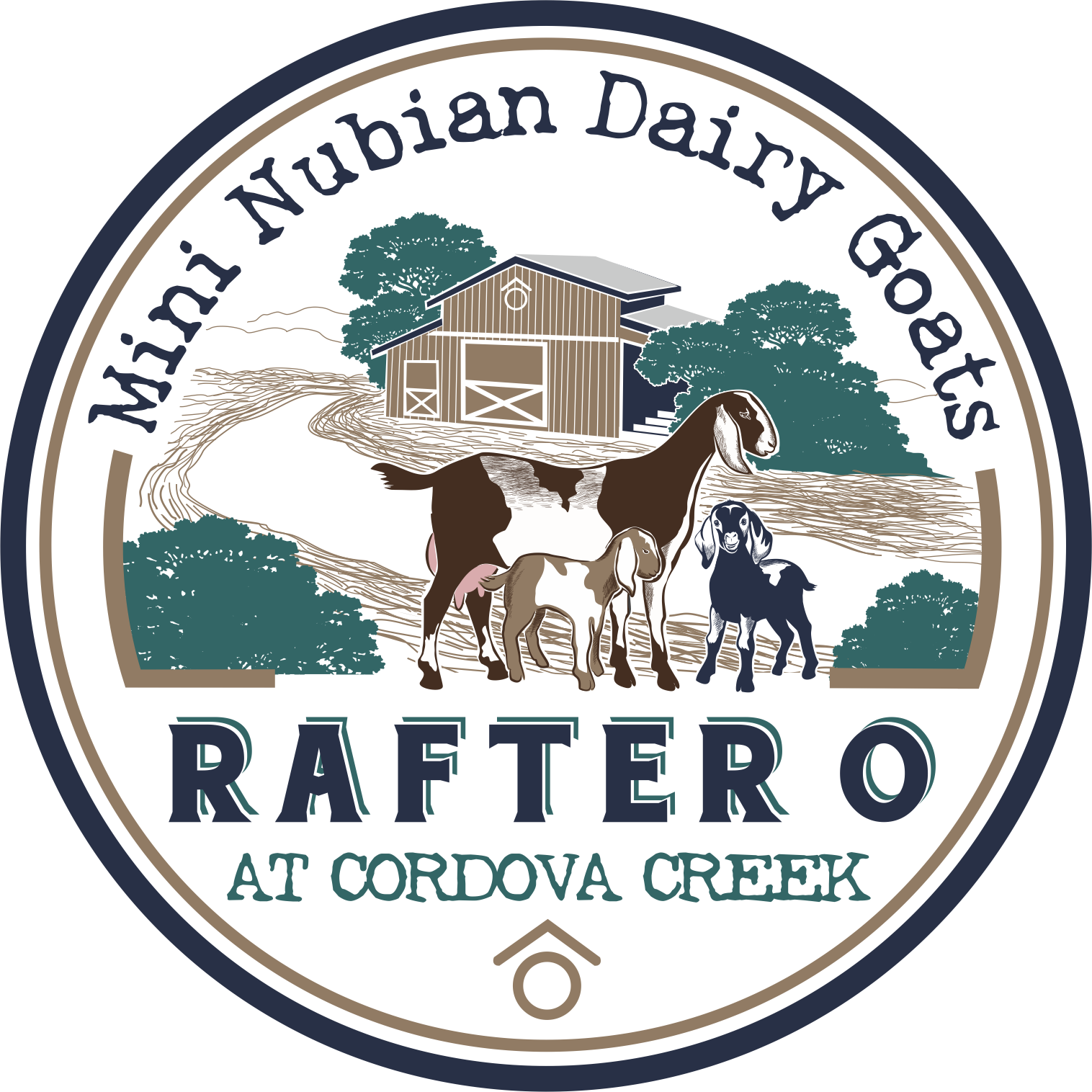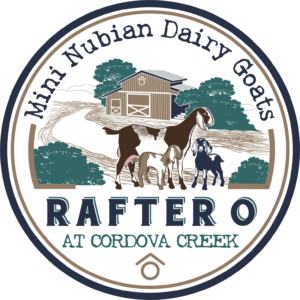more on the breed
What is a Mini Nubian?
The Miniature Nubian Dairy Goat is the result of a breeding between a Nigerian Dwarf buck and a Nubian doe. The goats maintain the looks, have a high percentage of butterfat content, and have mild-flavored milk of the Nubian in combination with the smaller size of the Nigerian.
In height, the Miniature Nubian falls between the standard Nubian and the Nigerian Dwarf. Mini Nubian does normally stand from 23-29 inches at the withers and weigh around 100 pounds. Bucks can be larger with a height up to 31 inches and weigh around 135 pounds.
As one of its most distinctive features, the Miniature Nubian maintains the long drooping ears of the Nubian. They also possess the Nubian’s docile temperament, sweet disposition, and wonderful milk characteristics. Miniature Nubian Goats have an average milk production of 1525 pounds in 305 days, about 5 pounds or 2 quarts of milk daily. Although small, they are dairy goats with production capacity and teats long enough to get your hands on.
The Mini Nubian is an experimental breed registered through the Miniature Dairy Goat Association (MDGA). A nicely conformed Mini Nubian should have a long body, a wide escutcheon for good udder attachment, a wide rib cage for carrying kids, a straight top line, a slightly roman looking nose, and long pendulous ears.
Mini Nubians come in a wide range of colors and patterns. They are friendly, hardy, medium-size utilitarians that provide a lot of very healthy milk for their size and unparalleled brush and weed control. The Mini Nubian Goat provides a little something for everyone and is ideal for landowners who are attempting to produce their own food on just a few acres.
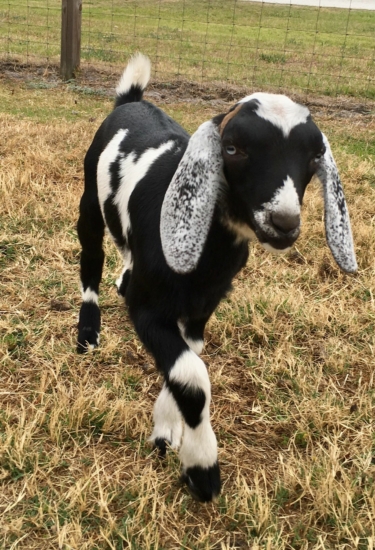
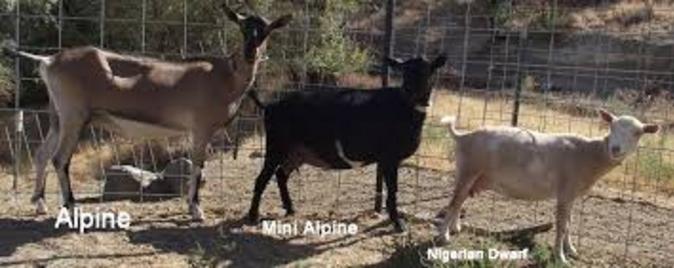
small and mighty
What is a Mini Dairy Goat?
A miniature dairy goat is the product of a standard-sized purebred/American goat bred to a Nigerian Dwarf for the first generation of mini dairy goats. Only documented animals with traceable registrations can be used to produce a mini goat. Nigerian Dwarfs must be purebred registered with one of the ND registries.
Each generation of correct miniature goats will be called an experimental until it reaches the 3rd generation, where it may enter the American herdbook IF it meets the Breed Standards and the 70/30 Rule.
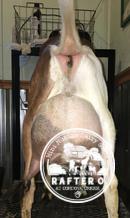
what's all the fuss?
Why Mini Dairy Goats?
Some people with small acreages are looking for smaller milk-producing animals for their family’s milk supply. Miniature dairy goats are now being allowed in some large cities across the country.
Standard dairy goat breeds have been pushing for greater stature for the show ring which has resulted in all of the standard dairy goat breeds getting larger in recent years. Smaller goats are easier for children, seniors, and the handicapped to handle. Their smaller size makes them a lot easier to handle than their larger relatives, so hoof trimming, clipping, showing, and milking become much easier.
Feed costs are rising, and a mini dairy goat can often produce 2/3 the amount of a standard dairy goat while often consuming 1/2 as much feed. Smaller goats are in demand for the pet market. The influence of Nigerian Dwarf blood may expand the breeding season past the fall months and increase the butterfat in the milk.
Miniature dairy goats have been reported to produce anywhere from 2 lbs. a day (1 quart) to 10 lbs. a day (one and a quarter gallon) with an average of around 5-6 lbs. (3 quarts) of milk daily. Genetics and management will play an essential part in milk production.
understanding generations
What's with all the Fs?
Mini Dairy goats are a group of new dairy breeds that are being created by taking a full-size dairy doe and breeding it to a Nigerian Dwarf buck. The goal is to produce a mid-size dairy goat that looks like the standard-size breed. One of the things that have been confusing to many people is the percentages listed on the pedigree. This is the amount of standard-sized goat and Nigerian blood in the Mini-Dairy goat. This article will attempt to explain where those numbers come from. The other thing often misunderstood is the generation of a mini-dairy goat.
Understanding Generations: A first-generation (F1) is when one of the parents is a Nigerian Dwarf (ND) or a Standard sized doe (one of the recognized dairy breeds). Usually, the first cross is an ND buck x Standard doe rather than the other way around. Then if you breed an F1 to another F1 you have a second-generation (F2). F2xF2 = F3 and so on. The kid’s generation is always one generation higher than the lowest generation parent with the foundation animals (ND or Standard breed) being considered 0 generations. So, if you breed an F3 to an F1 it is an F2. Even if you bred an F6 to an F1 you would only have an F2.
*Information on this page courtesy of The Miniature Dairy Goat Association.
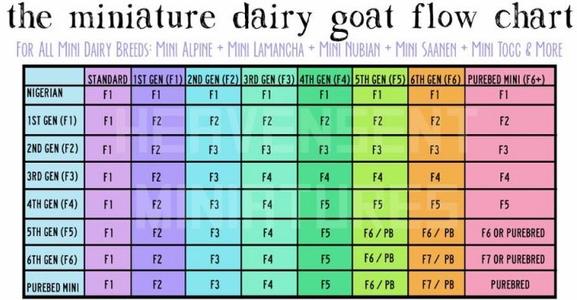
Summary of Frequently Asked Questions (FAQs)
What is a Miniature Nubian Dairy Goat?
The Miniature Nubian Dairy Goat is the result of a breeding between a Nigerian Dwarf buck and a Nubian doe. The goats maintain the looks, high percentage butterfat content, and mild-flavored milk of the Nubian in combination with the smaller size of the Nigerian.
What is a Miniature Dairy Goat?
A miniature dairy goat is the product of a standard-sized purebred/American goat bred to a Nigerian Dwarf for the first generation of mini dairy goats. Only documented animals with traceable registrations can be used to produce a mini goat. Nigerian Dwarfs must be purebred registered with one of the ND registries.
Why Miniature Dairy Goats?
Some people with small acreage are looking for smaller milk-producing animals for a family milk supply. Miniature dairy goats are now being allowed in some of the large cities across the country.
Standard dairy goat breeds have been pushing for greater stature for the show ring which has resulted in all of the standard dairy goat breeds getting larger in recent years. Smaller goats are easier for children, seniors and the handicapped to handle. Their smaller size makes them a lot easier to handle than their larger relatives, so hoof trimming, clipping, showing, and milking become much easier.
Feed costs are rising and a mini dairy goat can often produce 2/3 the amount of a standard dairy goat while often consuming 1/2 as much feed. Smaller goats are in demand for the pet market. The influence of Nigerian Dwarf blood may serve to expand the breeding season past the fall months and increase the butterfat in the milk.
Miniature dairy goats have been reported to produce anywhere from 2 lbs. a day (1 quart) to 10 lbs. a day (one and a quarter gallon) with an average of around 5-6 lbs. (3 quarts) of milk daily. Genetics and management will play an important part in milk production.
What do the Fs mean for Miniature Dairy Goats?
Understanding Generations: A first-generation (F1) is when one of the parents is a Nigerian Dwarf (ND) or a Standard sized doe (one of the recognized dairy breeds). Usually, the first cross is an ND buck x Standard doe rather than the other way around. Then if you breed an F1 to another F1 you have a second-generation (F2). F2xF2 = F3 and so on. The generation of the kid is always one generation higher than the lowest generation parent with the foundation animals (ND or Standard breed) being considered 0 generations. So, if you breed an F3 to an F1 it is an F2. Even if you breed an F6 to an F1 you would only have an F2.
